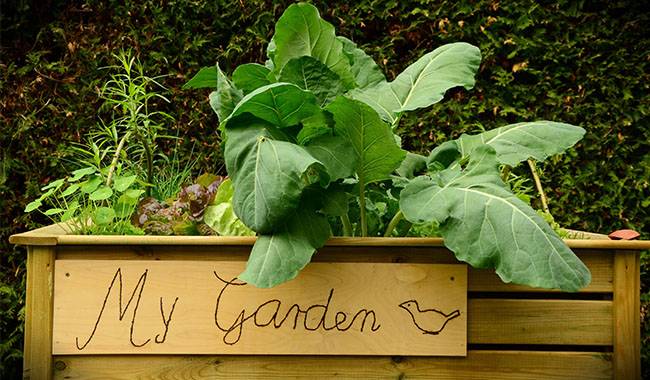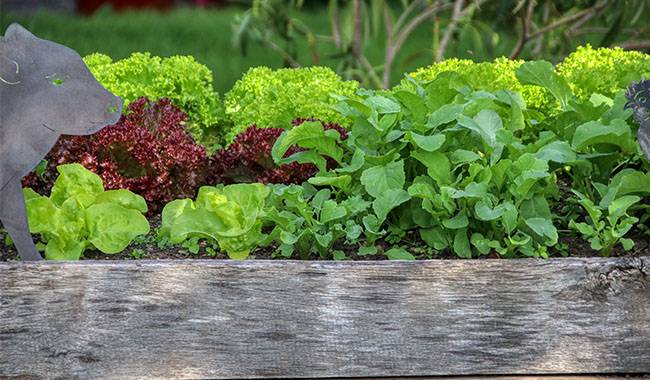
The most difficult work in the “garden field” is laying out of the site. Breaking it down into beds, and digging it up in the fall.
Loosening the soil, planting, tending, and even watering (although this is not an easy task for older people) is less scary for the gardener because these tasks are more time-consuming and can at least get a short break in the warmer months.
So, how do you organize your summer cottage with plots to keep it attractive, keep the vegetable garden clean, and reduce caregiving? I suggest making a Narrow Garden Bed.
In this material, I will tell you how Narrow Garden Beds save a lot of labor for large estate owners and share the experience of creating them.
WHY BIG GARDENS DON’T EQUAL BIG HARVESTS
Years of gardening experience have shown that the quantity of quality harvest is not provided by a large area.
Plants can be more carefully cared for in smaller areas, which means that bushes and entire areas will yield the most and have the best quality fruit. It takes 2-3 times less effort and time to take care of crops on small plots.
Multi-field rotations (8-12 crops) with large beds can be an overwhelming task in later years.
My grandmother is 77 years old and has been using the Narrow Garden Bed method in my vegetable garden for the past 15 years. It is very convenient and does not require money or excessive physical labor.
AN EASY WAY TO CREATE A NARROW GARDEN BED
To change a traditional vegetable garden into a more progressive one, you first need to measure the total area of the plot. Level the area set aside for the vegetable garden and divide it into Narrow Garden Beds with wide paths.
The beds should be no more than 15-25inch (40-50cm) wide. A wide path should be left between the beds: 30-50inch (80-120 cm). The length of the seedbed is arbitrary and depends on the owner’s wishes.
Beds are better oriented from north to south. Such an arrangement will extend the light hours for the plants on the beds. All remnants of grass and vegetable plants (not affected by diseases) are dumped on the paths.
You can exchange narrow beds and paths after 2 to 4 years. Allocate a narrow bed in the middle of a wide path and form a wide path from the sides of the worked-out bed and path.
Over the years, weeds, tractors, and garden plant stems will accumulate enough of a semi-decomposing ground cover layer.
The new Narrow Garden Bed is loosened 3-4inch (8-10cm) deep with a hoe. After winter, the soil becomes plumped up and aired out, and in the spring, it is loosened again. No recultivation is required.
If not all the work is done in time (for various reasons) and weeds have risen in flower beds and paths, they are mowed and allowed to rot.
Narrow seedbeds can be left untouched and wide paths can be seeded with resilient grasses such as Kentucky bluegrass, Kentucky bluegrass, and other grasses. They suppress common weeds and you get the bed in green turf grass.
Some owners cover trails with old plywood and roofing materials to reduce weed overgrowth and make it easier to work in the bed. In this case, the removed weeds are left between the rows of the bed.
If you have the time and energy, you can fence off the beds and raise them above ground level. However, this work requires time and materials. In addition, plants develop better on free soil without any fencing.
WHAT ARE THE BENEFITS OF A NARROW GARDEN BED?

Free access to the plants on such a bed from both sides. It is easy to cultivate, loosen the soil and plant.
These tasks can be performed while sitting on the bench next to the bed or moving around the bed while planting large planting materials (potatoes, onions, small huckleberries, peas, etc.).
Only one condition is strict: you must not step on the bed, so as not to compact the soil. All work is done from a wide path between the beds.
On the wide path, all auxiliary work is carried out using containers, carts, and auxiliary tools, without touching the bed.
Crops are no longer planted in 2-3 row garden beds, except for small seeds (leeks, dill, radishes, lettuce, etc.). In narrow seedbeds, the rows should be kept as narrow as possible.
This way, the expansion of the above-ground parts of vegetable plants will cover the bare soil more quickly.
For example, in a narrow bed, rows are spaced 14x14inch (35×35 cm) for early tomatoes, 16x16inch (40×40 cm) and no more than 20x20inch (50×50 cm) for tall bushes, 2x2inch (5×5 cm) for carrots, and no more than 8x8inch (20×20 cm) for cucumbers ).
It will die under the green shade of the crop, so there is no need to relax often to get rid of weeds. In addition, water evaporates 20-25 times less from the surface of the plant’s leaves than from the open soil surface.
In winter, there is enough time to consider crop rotation in the vegetable garden. The basic rule – in a bed, crop rotation should continue throughout the warm season.
For example, if you do not need a large harvest, you can divide the bed into 2-3 parts. One of them is sown with a few mature radishes, the second with spinach or salad, and then an onion bath as an annual crop.
Radishes will occupy their part of the bed for no more than 1-1.5 months. After their harvest, you can plant early cabbage, early tomatoes, sprouts of 40-day potatoes.
After harvesting lettuce, the second half of the bed can be occupied by medium or medium-early tomatoes, greens (dill, celery, parsley, basil), and spring garlic.
If it is planned to grow medium-late tomatoes in the garden, cabbage tomatoes, it is necessary to sow such beds together in the fall or spring so that they do not become empty and become a testing ground for weeds.
When the seedlings are ready to be planted, cut the oxalate and use it as a mulch for crops. All crop care can be carried out slowly, preferably on benches suitable for this operation.
CARING FOR CROPS ON NARROW RIDGES
Loosen the soil
On the bench, you can easily reach a row of plants on one side of the bed and on the other, loosening the soil and killing weeds.
It is best to leave the weeds in between the crop rows, but if there are still a lot of weeds and they are overgrown (as they will be the first year), then destroy the weeds that are dumped in the path.
This layer of weeds will pop up under your feet, which will put less pressure on the soil. It will not be trampled as much.
The weeds will be decomposed and form a ground cover that will be very useful in the future. If weeds also appear in the path, they can be easily eliminated by surface loosening.
Mulch
Mulch is easily laid in narrow beds. As mulch, use the same weeds (they are spread between the rows), straw, sawdust (except for conifers) and wood chips, and green blocks of mowed green manure.
With a 3-4inch (7-10 cm) layer of mulch (no less, or the mulch won’t work), the weeds won’t germinate and die, as well as some pests, including the Colorado potato beetle (for which the number of treatments is reduced).
In addition, the green manure will loosen the soil with its root system, it will not need to be re-tilled, and at the same time, it will act as a green fertilizer for the main crops.
Constant occupation of the plot eliminates the need to pay high costs for constant weed control. Mulch prevents soil contamination of the fruits of vegetable crops close to the ground (tomatoes, gherkins, strawberries, etc.) and prevents infection by fungi (phylloxera, rot).
Through decomposition, the mulch replenishes the soil with organic matter, which will increase its fertility and improve its structure.
If the plot is heavily clogged, some weeds can be removed before spring construction without much effort. It is only necessary to provoke them to germinate more quickly.
Spread peat, grass ash, and hummus on the snow in spring and cover it with cling film. Sunlight is attracted to the dark surface, the ground under the film warms up faster, and the weeds begin to germinate. Within 1.5-2 weeks, loosen the soil in flower beds and paths to eliminate weeds.
Repeat the provocation technique if you plan to plant late crops in the bed. Just the bare soil is again fluffed by surface loosening (too hard soil is not necessary).
It is convenient to cover narrow ridges, especially under strawberries or perennials, with mulching material that will not let in light but will allow moisture to escape.
If weeds are not removed from paths in a timely manner, they can be cut back by the roots and used as mulch for garden crops in beds.
Water the plants
If there is sufficient rain in May and a lot of timely soil mulching, it is possible to reduce some watering by increasing the time between irrigations.
Moisture is well retained under the mulch and does not allow the soil to form dry crusts, which can often harm delicate plant stems.
Drip irrigation is easily arranged in narrow field ridges. From the main water pipe running along with the vegetable garden, a perforated hose is directed to each narrow bed.
The smaller the diameter of the hole, the more often it is placed. The main hose is connected to a water tap. The water pressure is low – it should be dripping, not pouring.
Dear readers
Please keep in mind that transitioning to narrow ridges will not automatically rid your garden of weeds in a year, but it will help reduce the labor cost of handling the site and give you a fairly high yield of vegetables without physical overexertion.







